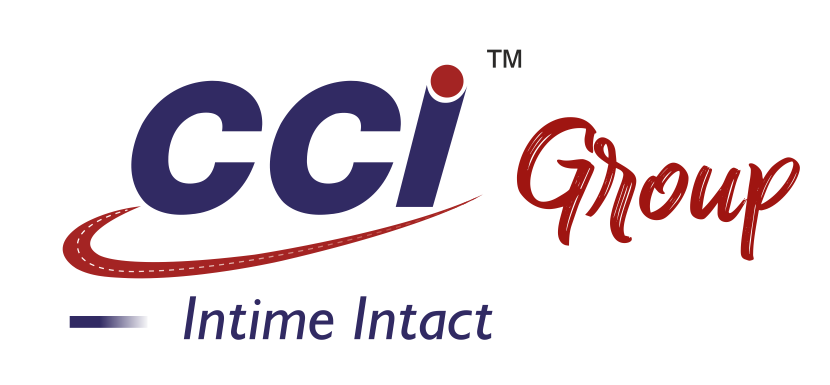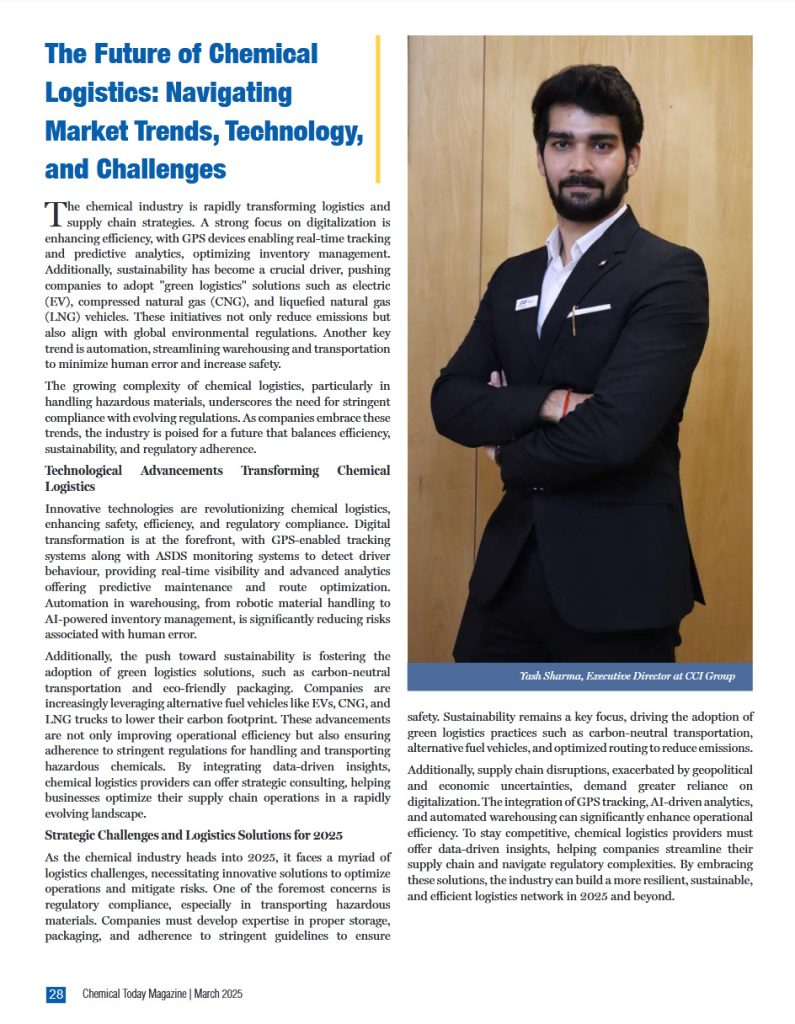

The chemical industry is rapidly transforming logistics and supply chain strategies. A strong focus on digitalisation is enhancing efficiency, with GPS devices enabling real-time tracking and predictive analytics, optimising inventory management. Additionally, sustainability has become a crucial driver, pushing companies to adopt “green logistics” solutions such as electric (EV), compressed natural gas (CNG), and liquefied natural gas (LNG) vehicles. These initiatives not only reduce emissions but also align with global environmental regulations. Another key trend is automation, streamlining warehousing and transportation to minimize human error and increase safety.
The growing complexity of chemical logistics, particularly in handling hazardous materials, underscores the need for stringent compliance with evolving regulations. As companies embrace these trends, the industry is poised for a future that balances efficiency, sustainability, and regulatory adherence.
Technological Advancements Transforming Chemical Logistics
Innovative technologies are revolutionizing chemical logistics, enhancing safety, efficiency, and regulatory compliance. Digital transformation is at the forefront, with GPS-enabled tracking systems along with ASDS monitoring systems to detect driver behaviour, providing real-time visibility and advanced analytics offering predictive maintenance and route optimization. Automation in warehousing, from robotic material handling to AI-powered inventory management, is significantly reducing risks associated With human error.
Additionally, the push toward sustainability is fostering the adoption of green logistics solutions, such as carbon-neutral transportation and eco-friendly packaging. Companies are increasingly leveraging alternative fuel vehicles like EVs, CNG, and LNG trucks to lower their carbon footprint. These advancements are not only improving operational efficiency but also ensuring adherence to stringent regulations for handling and transporting hazardous chemicals. By integrating data-driven insights, chemical logistics providers can offer strategic consulting, helping businesses optimise their supply chain operations in a rapidly evolving landscape.
Strategic Challenges and Logistics Solutions for 2025
As the chemical industry heads into 2025, it faces a myriad of logistics challenges, necessitating innovative solutions to optimize operations and mitigate risks. One of the foremost concerns is regulatory compliance, especially in transporting hazardous materials. Companies must develop expertise in proper storage, packaging, and adherence to stringent guidelines to ensure safety. Sustainability remains a key focus, driving the adoption of green logistics practices such as carbon-neutral transportation, alternative fuel vehicles, and optimized routing to reduce emissions.
Additionally, supply chain disruptions, exacerbated by geopolitical and economic uncertainties, demand greater reliance on digitalization. The integration of GPS tracking, AI-driven analytics, and automated warehousing can significantly enhance operational efficiency. To stay competitive, chemical logistics providers must offer data-driven insights, helping companies streamline their supply chain and navigate regulatory complexities. By embracing these solutions, the industry can build a more resilient, sustainable, and efficient logistics network in 2025 and beyond.

The original link to the article can be found here:
https://chemicaltoday.in/magazine/2025/April/April+2025


